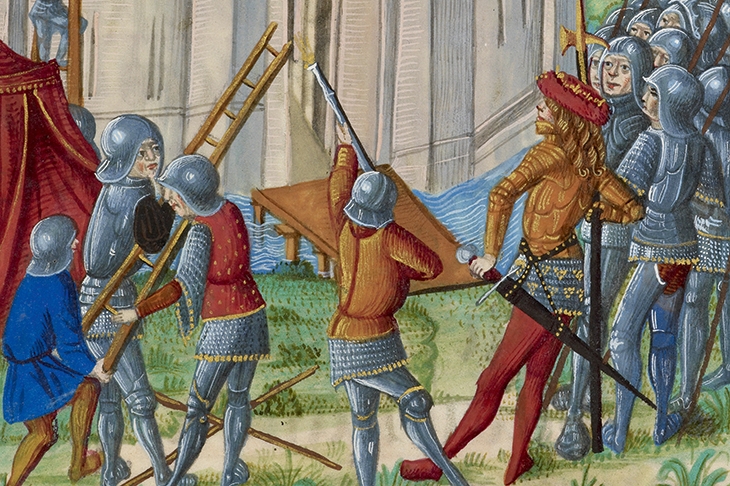Lionheart! Saladin! Massacre! There is no shortage of larger-than-life characters and drama in the epic, two-year siege of Acre, the great set-piece of the Third Crusade. But, as John Hosler relates in this accomplished study, there was so much more besides. Acre proved the strategic point for armies from across Europe, Syria, Egypt, Mesopotamia and the Maghreb; and the siege provided a kaleidoscope of competing ambitions, objectives and self-serving manoeuvrings amid the most arduous conditions, in which Bedouins ‘exchanged the severed heads of their victims with Saladin in return for robes and gifts’.
The coastal city of Acre, in present-day Israel, was the first objective of the crusaders, as it would be their primary port for supplying the army. If their ultimate goal of Jerusalem were to be won again — it had fallen to Saladin in 1187 — Acre had to be taken.
The siege began in late August 1189, before the arrival of the crusade’s pre-eminent leaders: King Richard I of England, King Philip II of France and Emperor Frederick Barbarossa.







Comments
Join the debate for just $5 for 3 months
Be part of the conversation with other Spectator readers by getting your first three months for $5.
UNLOCK ACCESS Just $5 for 3 monthsAlready a subscriber? Log in